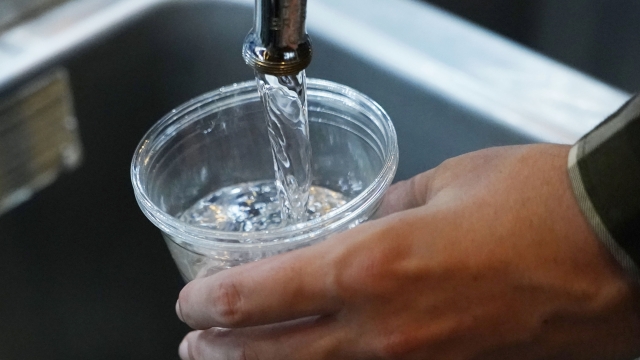A new government study found nearly half of faucets in the U.S. are likely contaminated with "forever chemicals," the common name for per- and polyfluoroalkyl substances (PFAS).
The chemicals often show up in non-stick cookware, food packaging and water-resistant clothing and can take generations to break down in the environment — if at all.
"It will stay there forever. It will outlive all of us," said Dibs Sarkar, a professor of environmental engineering at the Stevens Institute of Technology.
The U.S. Geological Survey says it conducted a first-of-its-kind study that discovered forever chemicals in drinking water by testing both private and government-regulated water supplies.
The USGS says there are more than 12,000 types of forever chemicals, many of which are undetectable with current tests.
In its latest study, the research agency tested for 32 types of PFAS in the tap water across the nation, in schools, homes, and even national parks.
They found at least one type of PFAS in about 45% of tap water samples, and some samples had as many as nine types of forever chemicals.
SEE MORE: Records missing, phones out: Flint water crisis not over
People living in cities on the East Coast and in the Midwest are most at risk of finding PFAS in their water. Comparatively, many tests in rural areas found no trace of PFAS.
In a video produced by Stevens Institute of Technology, Sarkar said that even the smallest amount of PFAS is dangerous to humans.
"It can cause cancer, it can cause immunity problems, it can cause liver problems, it can cause kidney problems, there are numerous problems PFAS causes," said Sarkar.
The USGS says PFAS can seep into water supplies through firefighting foams, wastewater treatment, septic and landfill systems and more.
In a video provided to the Associated Press, Jason Cannon, a professor of toxicology at Purdue University, said it could take years for the chemicals to leave our bodies.
"The half-lives in blood may be up to a decade for some of these, meaning it may take ten years almost to remove half of what you've been exposed to," said Cannon.
While the EPA regulates public water supplies, the USGS says homeowners are responsible for testing and maintaining their own water.
Experts say people can treat their water with carbon-based filters or reverse osmosis membranes, which are sink attachments that remove pollutants.
Trending stories at Scrippsnews.com



